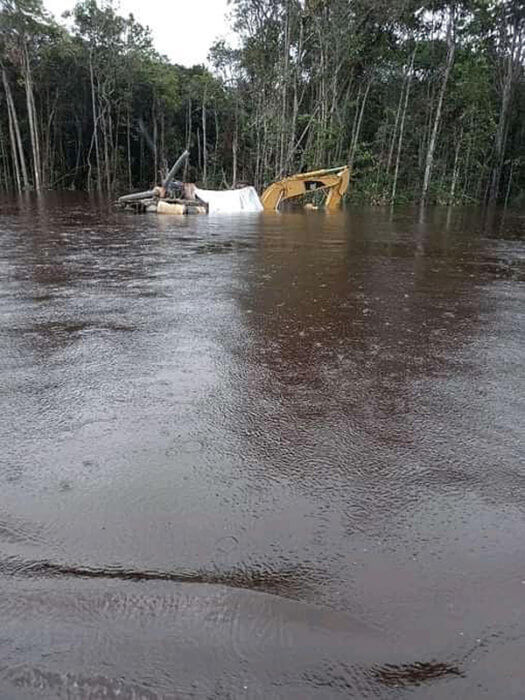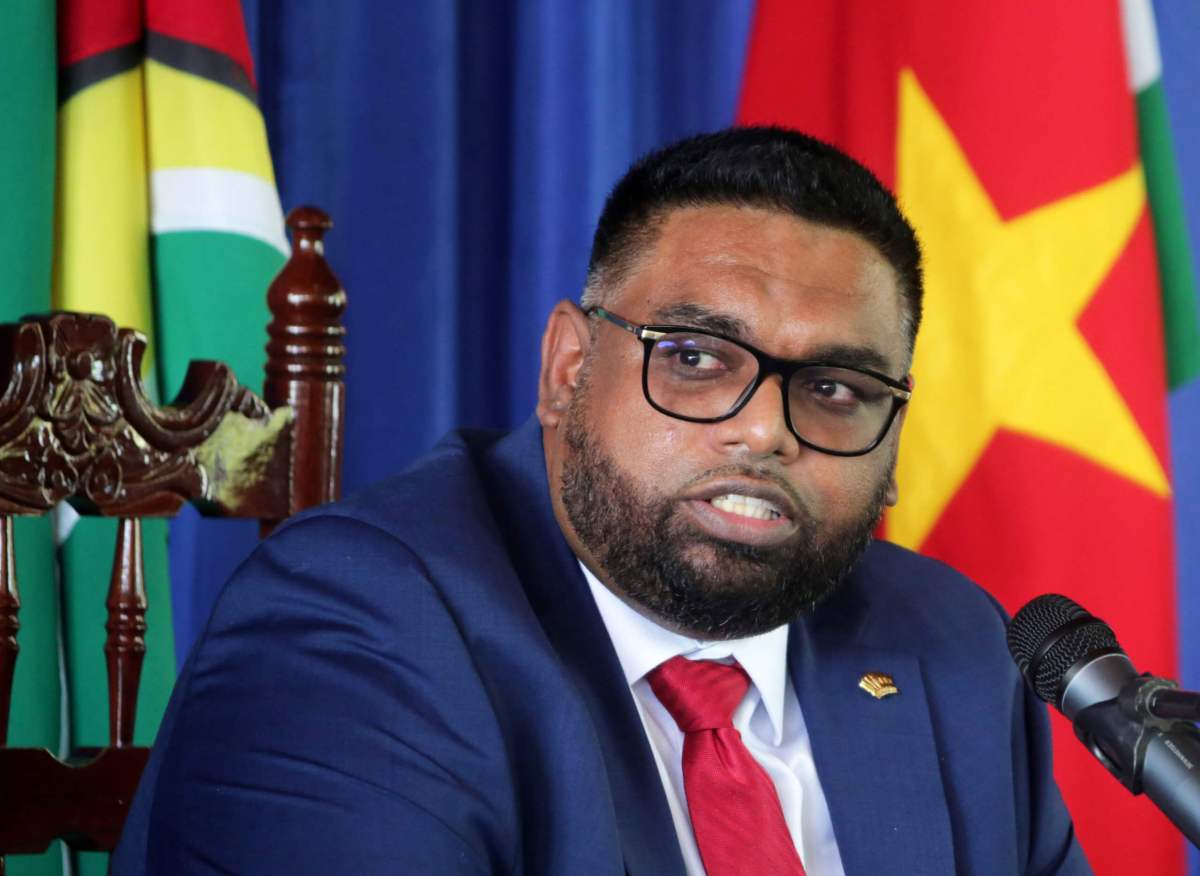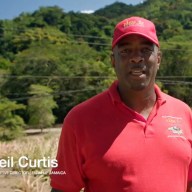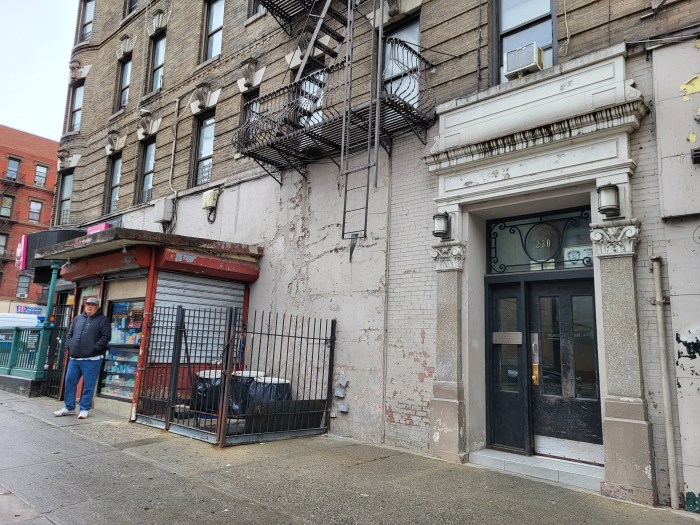Nearly two months of heavier than usual mid-year rains have left large parts of Guyana’s interior and riverain communities under flood waters as thousands of areas have been turned into lakes, farms destroyed, cattle, livestock and birds dead in droves and authorities under pressure to bring relief to beleaguered residents.
The persistent rainfall since the last week of April have so inundated communities across all 10 administrative regions of the country of about 800,000 people that government has been forced to call an urgent sitting of parliament this week to appropriate at least $5 million to immediately acquire care packages, replanting material, hygiene products, potable water and other basics to distribute across the country.
Officials say many are still under up to two feet of water, nearly two weeks after the heaviest single day rainfall on May 27 that netted five inches of rain in less than 24 hours. Police have reported no deaths or serious injuries. On May 8, the weather service recorded four inches in less than 24 hours as the country braces for additional bouts of rains and high tides this week.
Though less dire, the situation in neighboring Suriname is also a cause of worry to officials as homes in some southern and eastern communities remain under window-level flood waters, victims of several weeks of pounding rains.
As a countermeasure, authorities this week unveiled plans to release millions of gallons of water from the Afobaka dam in the interior as levels are just two and a half feet from overtopping. If it does, dozens of downstream Maroon and other communities will be flooded out so engineers will release water through flood gates when the tide is low to minimize problems in the nearby Suriname River. International weather forecasters have warned the two neighboring countries to brace for additional heavy rains in the coming days and have also suggested that the current wet season could extend into August.
As Guyana’s parliament prepared to meet, the country was pounded by several hours of heavy rain early Wednesday even as the civil defense commission appealed for help in getting relief packages to affected residents. The cabinet has already decided that this is among the worst natural disasters in living memory.

“Many of our brothers and sisters across Guyana are faced with the worst disaster we have ever had, or they have ever had, in the history of our country,” President Irfaan Ali said this week after returning from communities in the west near Venezuela. “I spoke to the people where their entire lives have been destroyed. The scale of the disaster is misunderstood by those of us in Region Four (the capital). And when you speak about the impact I am telling you about the farmer, over the last four generations who had livestock that is no longer there today,” he said.
Ali also said Guyanese should not forget that the nearly 300-mile coastline is about six feet below sea level and has to be protected from the Atlantic by an intricate system of drains, canals and floodgates that could be opened only at low tides. Failure to maintain such crucial drainage systems could have dire consequences, he said.
Meanwhile, cattle and livestock farmers in the southeast near Suriname as well as in the west and southwestern interior near Venezuela and Brazil have reported losses in the thousands. And residents in the southeastern bauxite community of Kwakwani received care packages from government ministers on the rooftops as the remainder of their homes are covered by flood waters.
The mining communities have also not been spared. Owners of thousands of gold and diamond mining camps have had to abandon production as interior rivers overflowed their banks, dumping sediments and water in open pits where miners pan for minerals.
“I have never seen so much rain in my 66 years on the face of this earth,” said former miner Cosmos DeSantos, now director at the national planning agency. “Many Amerindians in the mountains have complained about the amount of water flowing down so you can imagine what is happening in the valleys,” he said.
The rains and flood waters have also affected vehicular traffic for supply trucks in nearly every major jungle road from the city, including the 560-kilometer Georgetown to Lethem road connecting Guyana with Brazil, stranding supply trucks for more than a week in both directions.
As the civil defense commission distributes hampers to the affected, national weather service director Garvin Cummings this week said the mid-year rains are above average. “The year has been wetter than usual. May 2021 was the 2nd wettest May since 1981. The rest of June and July are also forecasted to be wet as we are in the primary rainfall season until July-August.”
He also said that the Rio Negro and Rio Branco rivers across the Guyana-Brazil borders have contributed massively to flooding on the Guyana side as these rivers had overtopped their banks several weeks ago. The Rio Negro was at its highest levels since 1902 at nearly 30 meters at the measuring points.
As the country enjoyed bright sunshine since Sunday, Vice President Bharrat Jagdeo said farmers and all affected will get government assistance to rebuild their lives.
“We have had unusual levels of rainfall and extreme high tides. I am told that the next wave of high tides will start on Wednesday. This will further complicate matters. The forecast is iffy. We hope that the rain will subside so that we can return to economic activities,” he said.

















